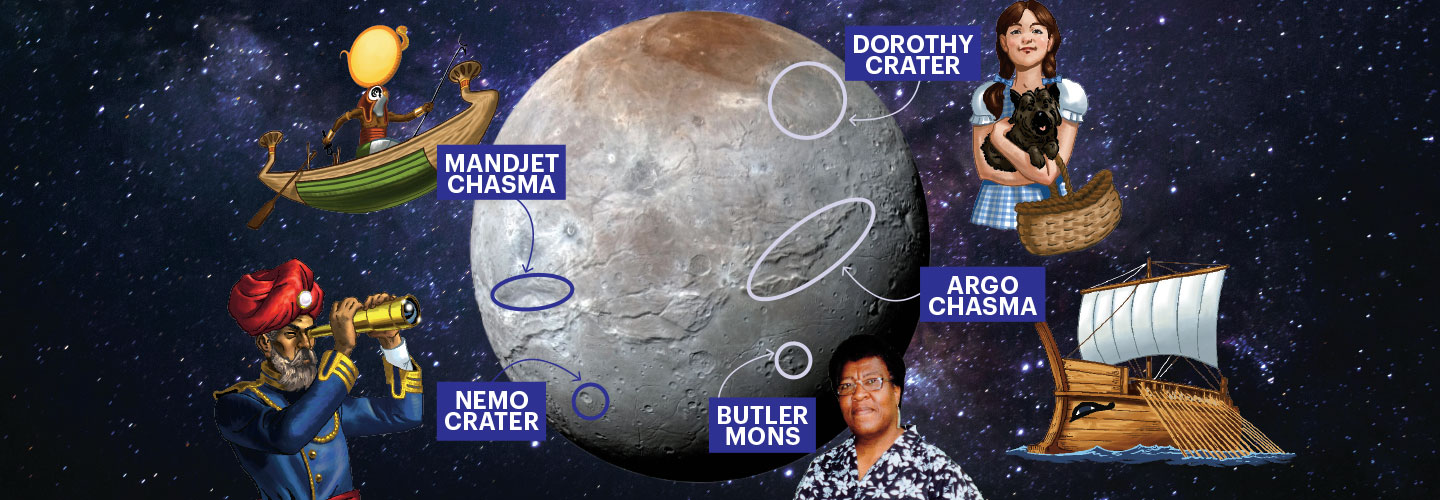Want to visit Dorothy Crater? You won’t find it in Kansas. It’s on Charon, Pluto’s largest moon. Dorothy Crater is one of 12 features on Charon that received official names earlier this year.
The International Astronomical Union (IAU) approves all names for features like mountains, canyons, and more on objects in our solar system. Each planet or moon has a theme. Features on Mars and the moon honor scientists and writers. The features on Venus are named after notable women. Jupiter’s moon Io showcases gods and goddesses from around the world.
Want to visit Dorothy Crater? Despite the name, it's not in Kansas. It's on Charon. That's Pluto's largest moon. Dorothy Crater got its name earlier this year. So did 12 other features on Charon.
Scientists name features like mountains and canyons on other moons or planets. The International Astronomical Union (IAU) approves all the names. The names for each place have a theme. Features on Mars and the moon honor scientists and writers. On Venus they're named after women. Features on Jupiter's moon Io aren't named for people. Instead, they showcase gods and goddesses from around the world.

